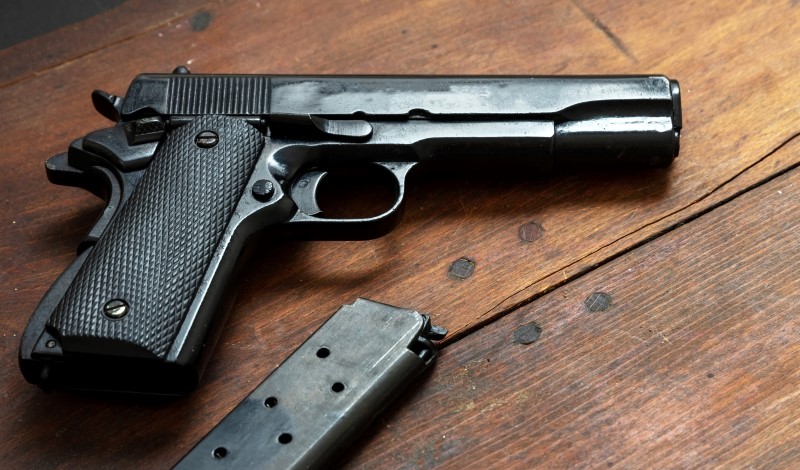
The Supreme Court rigidly limits governments to simplistic, outdated solutions to firearm violence.
Last year, the U.S. Supreme Court’s decision in New York State Rifle & Pistol Association, Inc. v. Bruen rejected New York’s century-old approach to gun regulation and announced a new test for Second Amendment rights. That test was constructed entirely out of a set of primary school—or maybe law school—beliefs about the simplicity and objectivity of historical analysis. It has now placed a straitjacket of historicism on regulations seeking to address the epidemic of gun violence in society today.
Coming at a time when stare decisis on the high court seemed to have taken a vacation. Bruen administered legal steroids to a right that the Court had only recently invented. Sadly, there is just no other way to say it: The Bruen opinion was moronic. Somehow the Court’s majority figured that judges could put themselves in the shoes of the framers and figure out that those 18th-century gentlemen had already looked at the “societal problem” of gun violence as it manifests today and decided that the best policy was unrestricted possession of arms for self-defense.
With the “method” articulated in Bruen, the Court felt free to decide that it was okay to “update” the Second Amendment to cover modern mass-produced, multi-shot, and automatic handguns but not to update gun policies. Although the framers surely could not have anticipated the nature and extent of gun violence today, maybe the Framers did not anticipate change to the “societal problem” of gun violence, or (the Court intuits) would not have changed their policy choice, but either way New York’s solution was out of bounds.
For purposes of using law to advance public health protection, the important consequence of Bruen is that the Court placed gun control outside of any epidemiological or other empirically based arguments about the causes and consequences of gun violence. While the Bruen majority was confident that it could reason by analogy from past restrictions and social circumstances to decide the bounds of modern legislation, it saw judges—including those on the lower courts that had upheld to the New York law—as unqualified to assess empirical evidence. Leave aside that history is a systematic empirical discipline that the current justices quite evidently have not a clue about, how can it be that lawyers are now thought to be able to reason by historical analogy but not to assess empirical facts in evidence?
The Court’s historical analysis in Bruen reflects a deep professional legal insularity. This was not history based on broad and deep research on how people lived and thought in the past. Rather, the Court made arbitrary inferences about the meaning of legal events drawn from cases, statutes, and law review articles. This was historicism, not history. In the name of better predictability and administrability, the Court set up a test that actually invites selective, inconsistent, and amateur historicizing of current views—the reification of the National Rifle Association’s version of the Second Amendment down to the grammar of “public carry” as if it were a historical artifact.
History ostensibly mattered to the Court—but not all history. The Court treated the Second Amendment as a fixed statement of American gun policy, frozen in history at the time of the nation’s founding. But it clearly did not treat what counts as a gun to be fixed in an era when muskets prevailed. The Court was willing to evolve in its interpretation of what “arms” are, but not its interpretation of how the Second Amendment should apply to the vastly changed weapons available today. This sense of gun policy as constitutionally fixed creates a strange and jarring contrast between Bruen and Dobbs v. Jackson Women’s Health Organization. On abortion, the Court said that states should be free to decide important matters of reproductive rights. But not when it comes to gun rights.
A year down the road, we are seeing where lower courts are taking the approach laid out in Bruen. Consider the March 2023, decision by the Fifth Circuit Court of Appeals in U.S. v. Rahimi. The case involved an individual who exhibited all the behavioral characteristics of someone who should not have access to a gun:
Between December 2020 and January 2021, Rahimi was involved in five shootings in and around Arlington, Texas. On December 1, after selling narcotics to an individual, he fired multiple shots into that individual’s residence. The following day, Rahimi was involved in a car accident. He exited his vehicle, shot at the other driver, and fled the scene. He returned to the scene in a different vehicle and shot at the other driver’s car. On December 22, Rahimi shot at a constable’s vehicle. On January 7, Rahimi fired multiple shots in the air after his friend’s credit card was declined at a Whataburger restaurant.
Because Rahimi was under a domestic violence restraining order, he was charged with violating a federal statute which prohibits anyone under such a court order from possessing a firearm.
In the Bruen era, any questions about the public interest in limiting a person’s gun possession are off the table, even in situations where there are strong indicators that someone might be prone to firing shots in a crowded theater—to borrow from Free Speech analysis. The only question after Bruen is whether old-time lawmakers would have used a similar prohibition to deal with gun problems as they understood them in their day—a day of slavery, patriarchy, marital rape, and muskets.
The Rahimi court’s explanation of the Bruen test makes chillingly clear how the Supreme Court’s historicism has chained us to the dead hand of a counterfactual or imaginary past:
The Supreme Court distilled two metrics for courts to compare the government’s proffered analogues against the challenged law: how the challenged law burdens the right to armed self-defense, and why the law burdens that right. “Whether modern and historical regulations impose a comparable burden on the right of armed self-defense and whether that burden is comparably justified are central considerations when engaging in an analogical inquiry.”
As to the degree of similarity required, the Rahimi court, again quoting Bruen, explained that:
“Courts should not uphold every modern law that remotely resembles a historical analogue, because doing so risks endorsing outliers that our ancestors would never have accepted.” On the other hand, “even if a modern-day regulation is not a dead ringer for historical precursors, it still may be analogous enough to pass constitutional muster.” The core question is whether the challenged law and proffered analogue are “relevantly similar.”
When the challenged regulation addresses a “general societal problem that has persisted since the 18th century, the lack of a distinctly similar historical regulation addressing that problem is relevant evidence that the challenged regulation is inconsistent with the Second Amendment.” Moreover, “if earlier generations addressed the societal problem, but did so through materially different means, that also could be evidence that a modern regulation is unconstitutional.”
The Rahimi court held that the federal statute was unconstitutional. Rahimi’s conviction on the weapons violation was vacated.
In summarizing its decision, the Fifth Circuit noted that, in the past, courts would have taken into account the “salutary policy goals” of the federal weapons restriction—goals that were “meant to protect vulnerable people in our society.” It would have weighed those compelling goals against the Second Amendment and held “that the societal benefits … outweighed its burden on Rahimi’s Second Amendment rights.” Yet notably, the court held that “Bruen forecloses any such analysis in favor of a historical analogical inquiry into the scope of the allowable burden on the Second Amendment right.” Engaging in that “historical analogical inquiry,” the court concluded that the federal law’s “ban on possession of firearms is an ‘outlier that our ancestors would never have accepted.’”
These passages are chilling in their frank adoption of the idea that our current responses to any social ill related to gun violence is limited to those that long-dead, mostly wealthy and uniformly white men considered appropriate. Faced with a wide range of social problems never imagined by even the best minds of the 18th century, the willingness of judges to put policy in a straitjacket woven of an imaginary history is deeply unsettling. Instead of regulatory adaptation and innovation, our range of solutions to modern problems will be limited to only those measures “our ancestors would … have accepted.”




